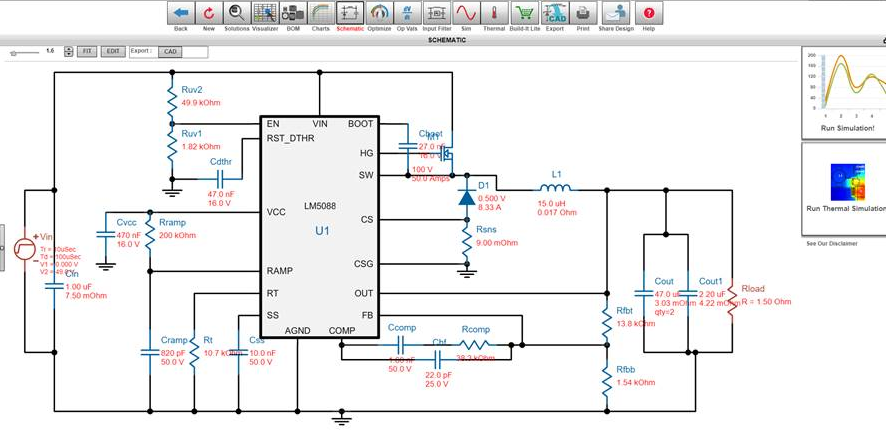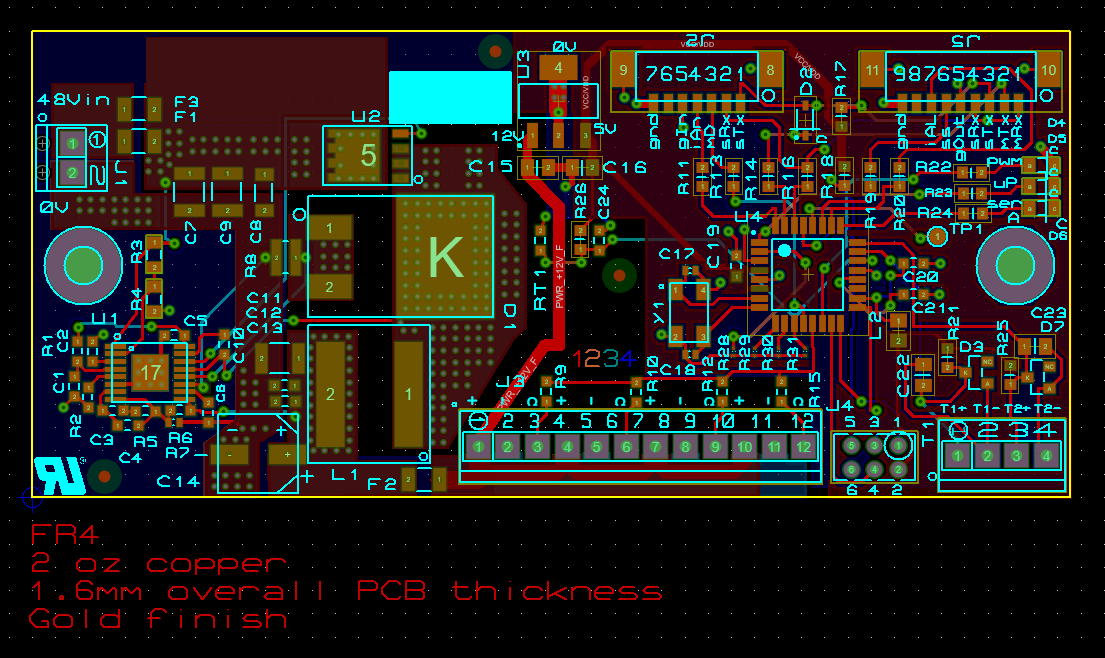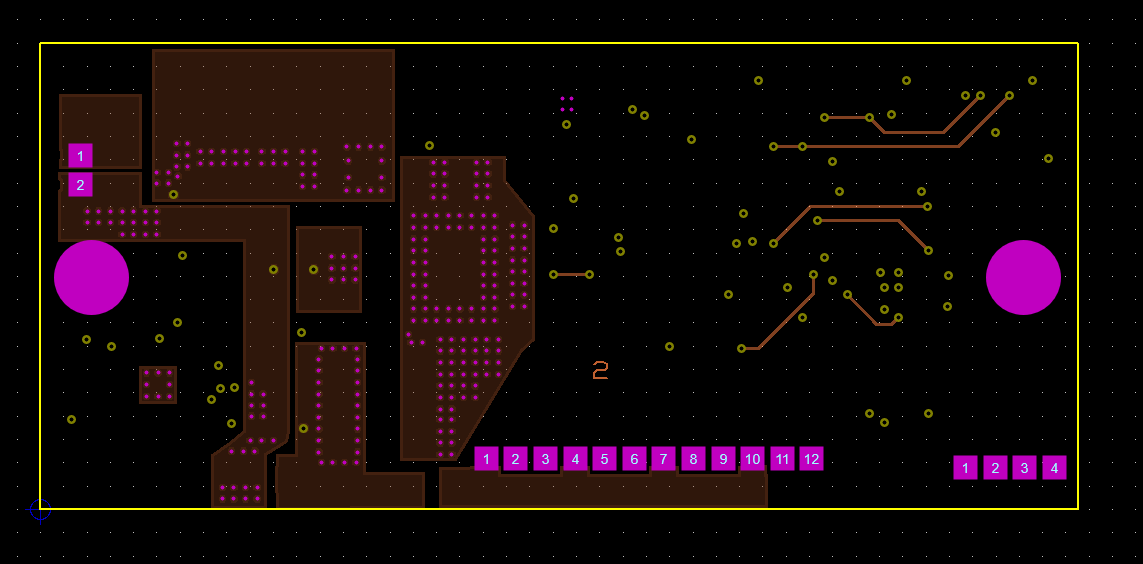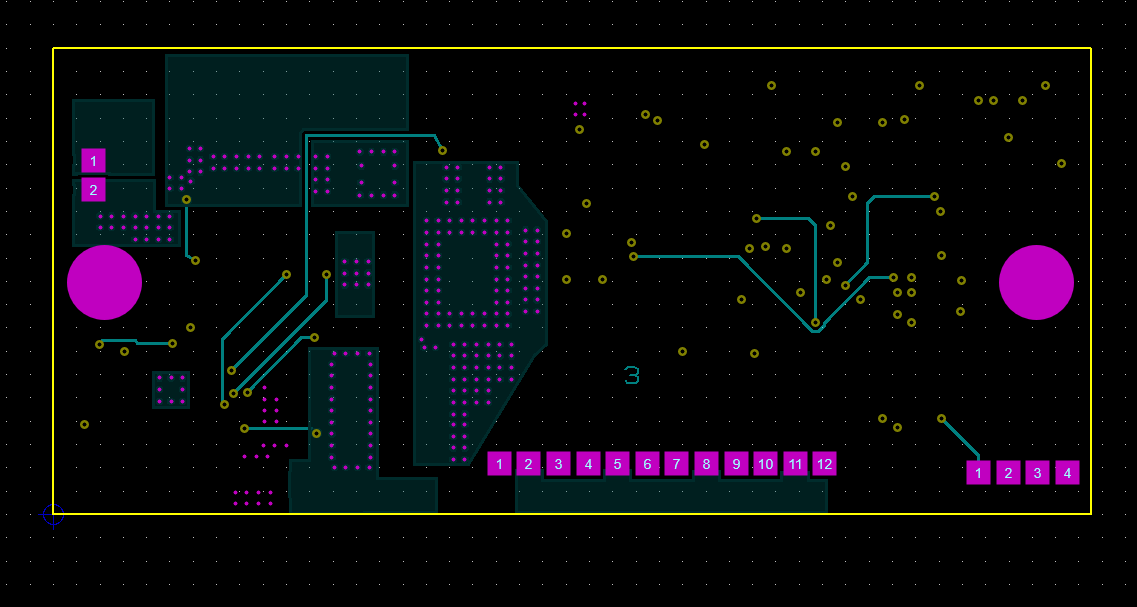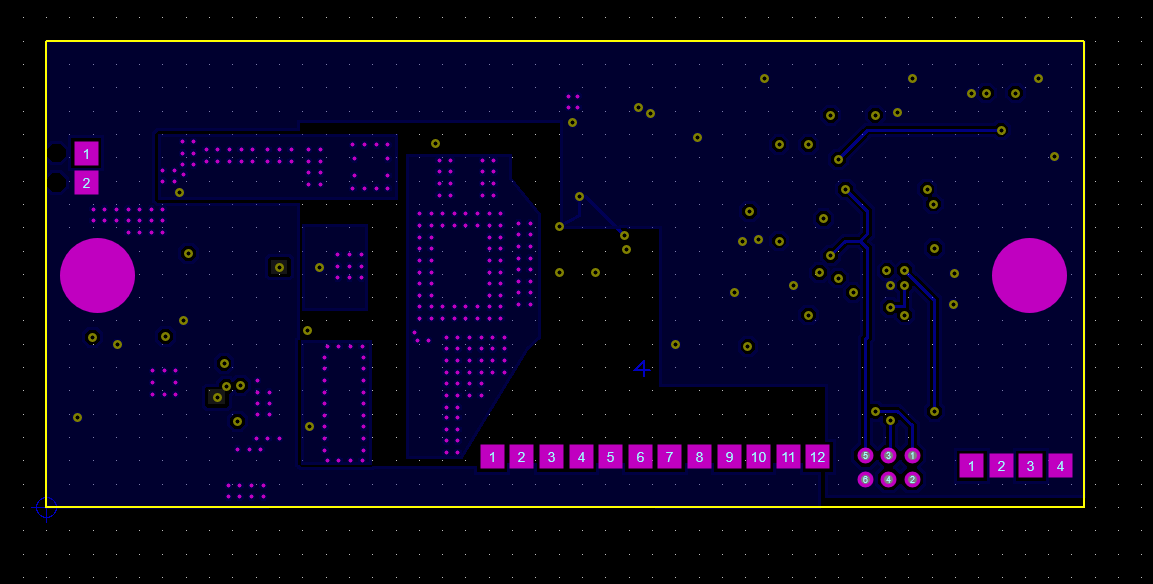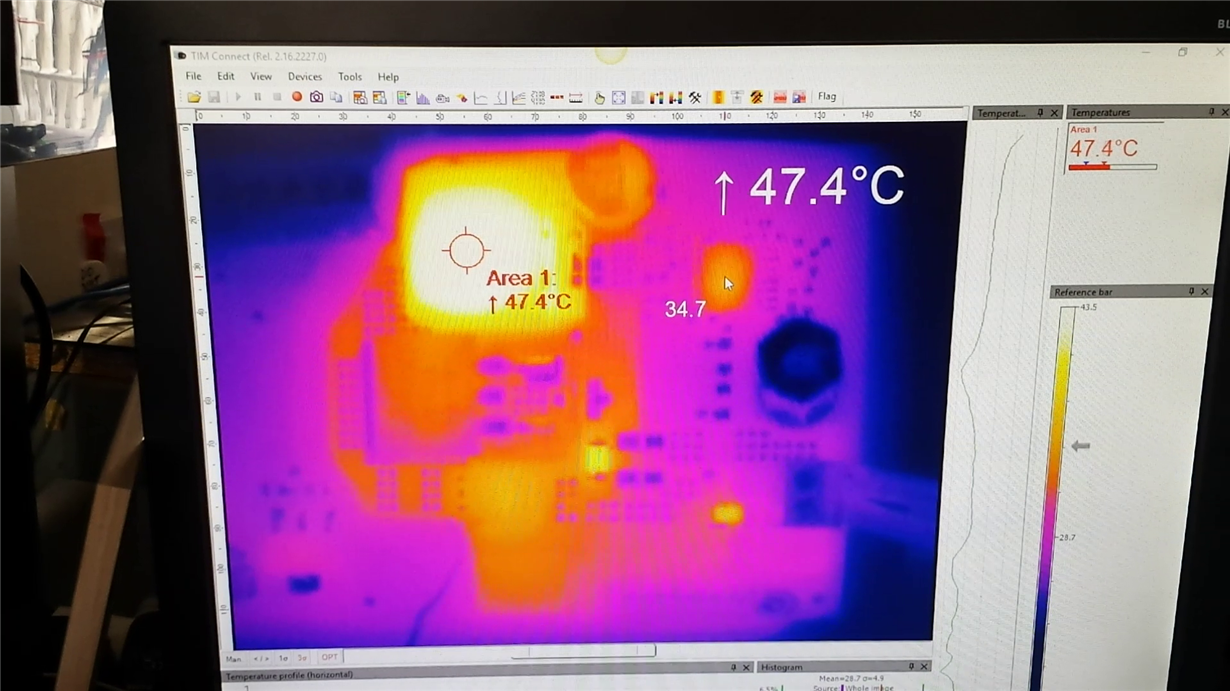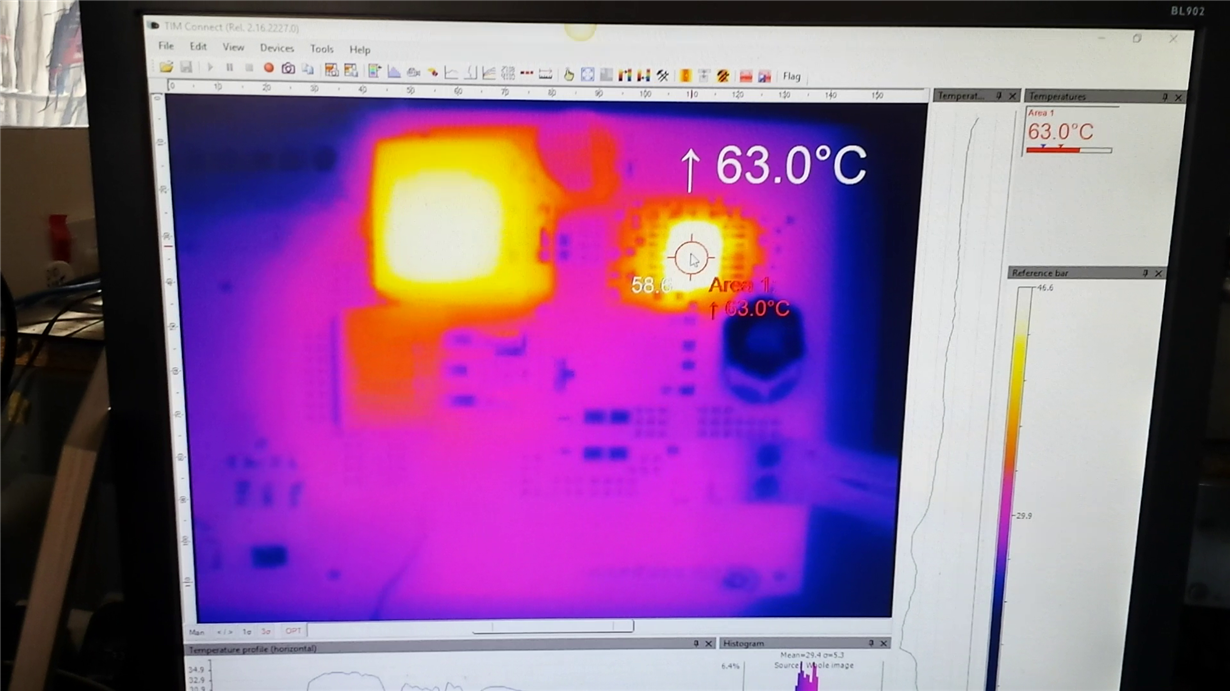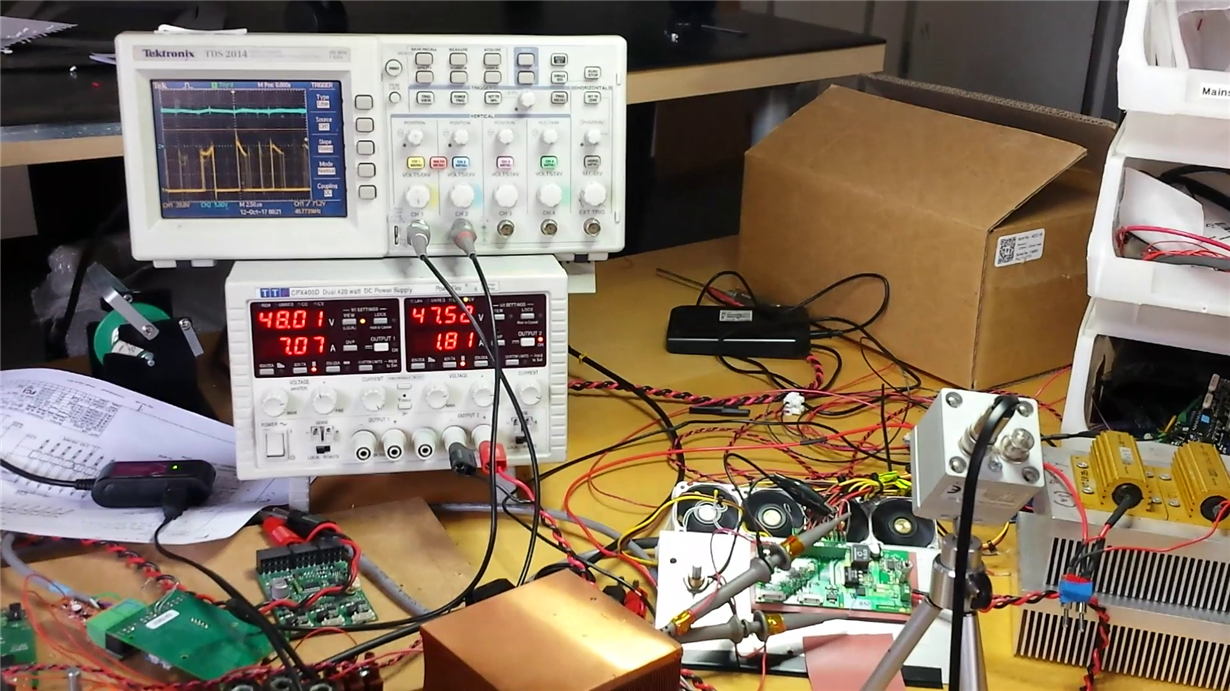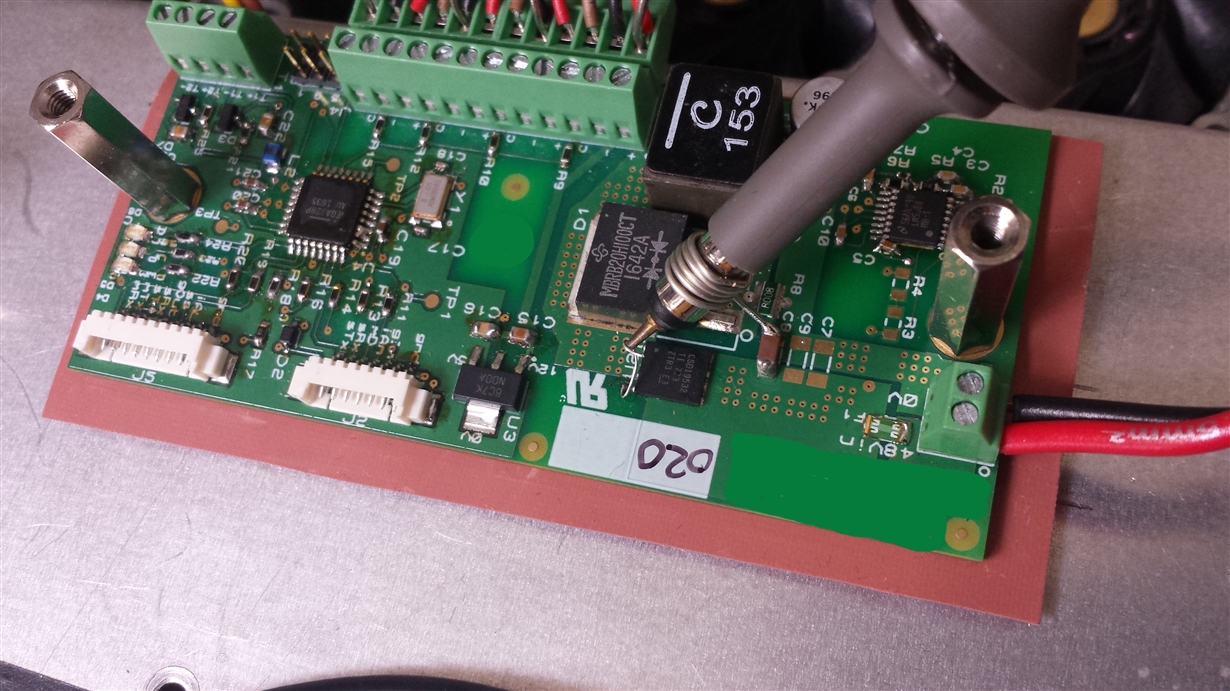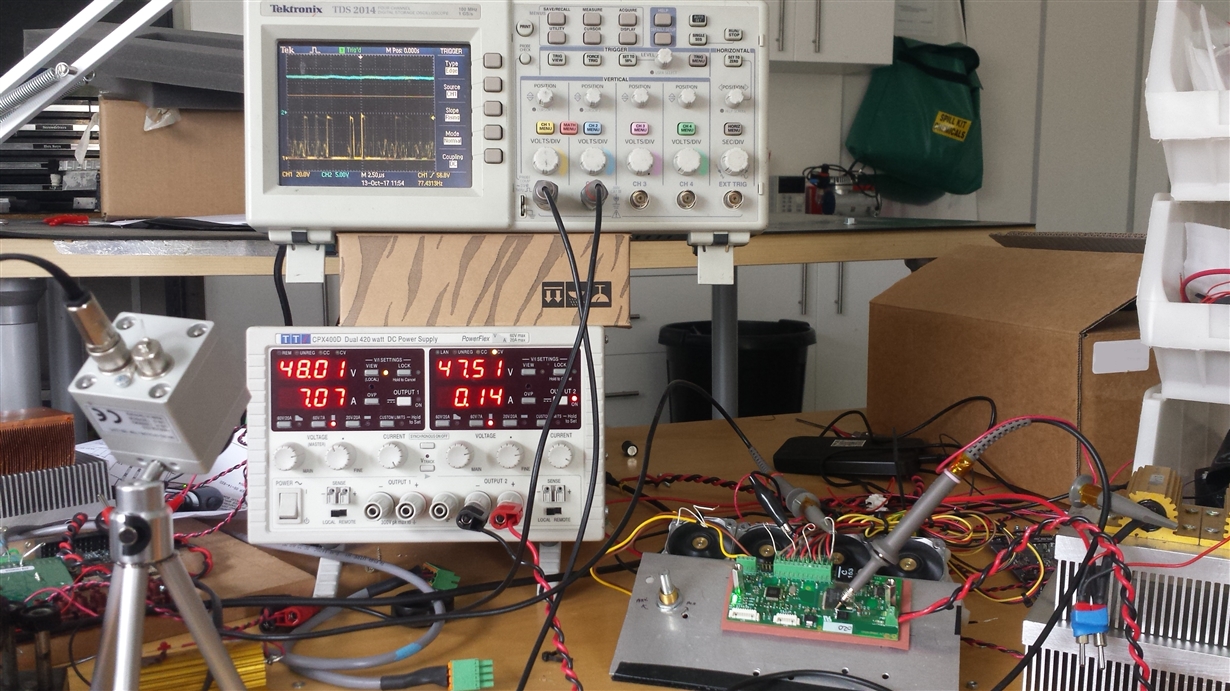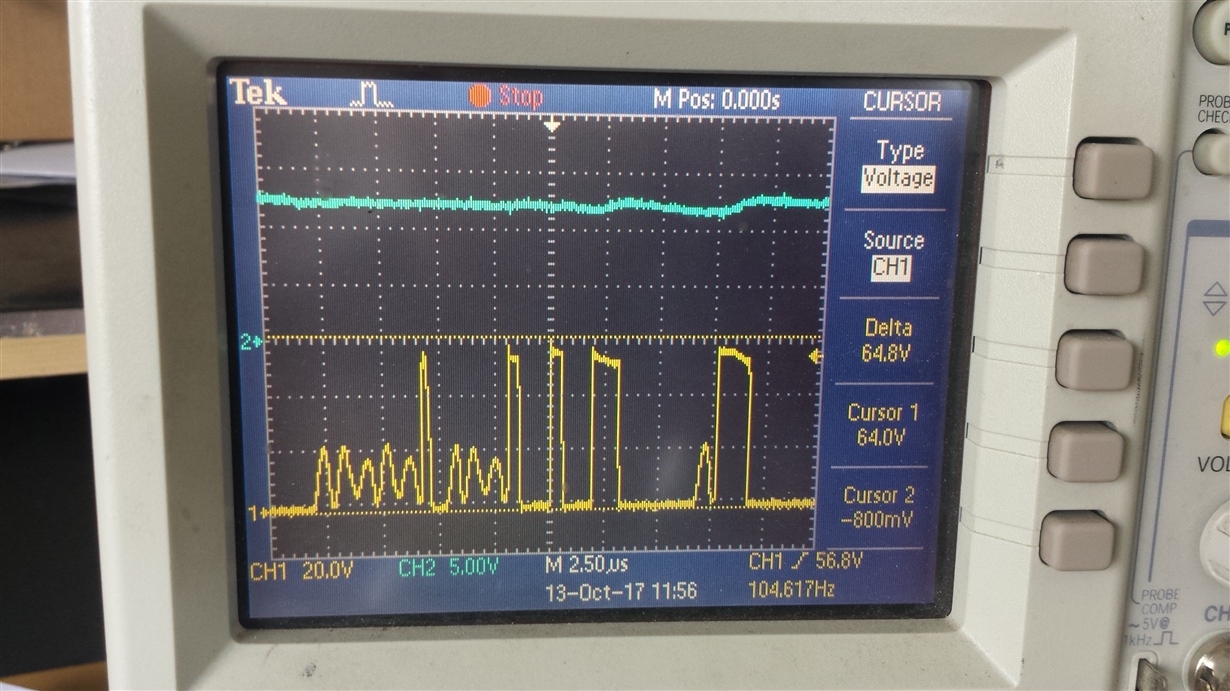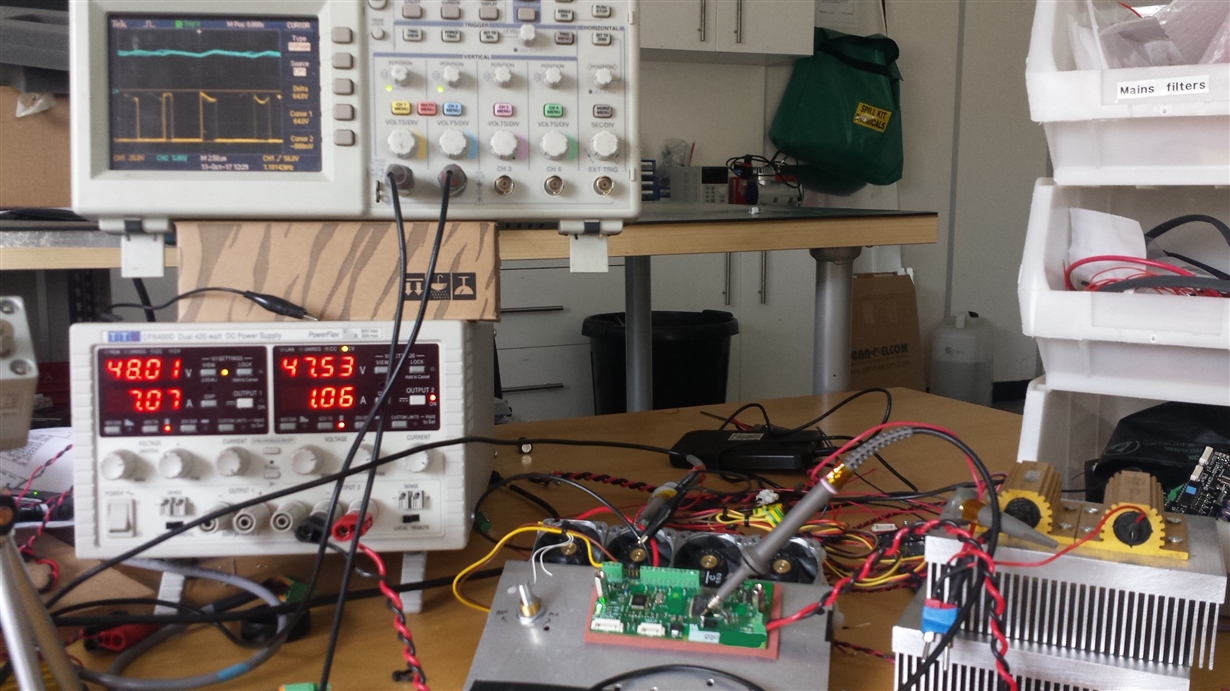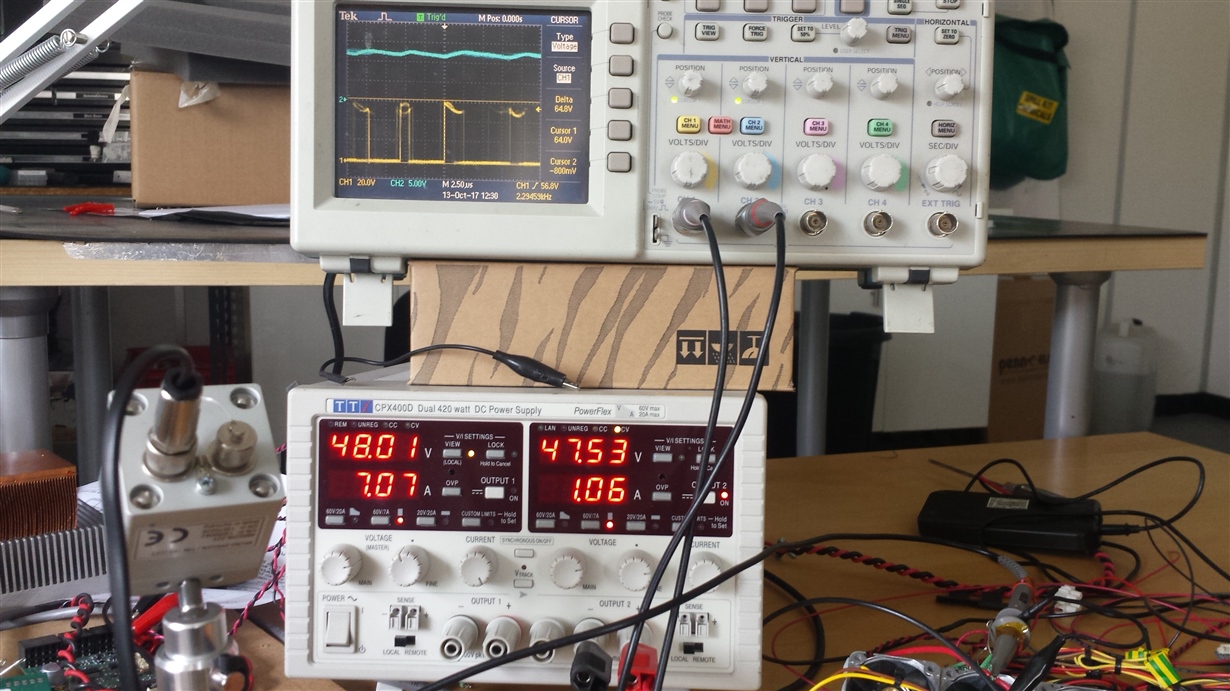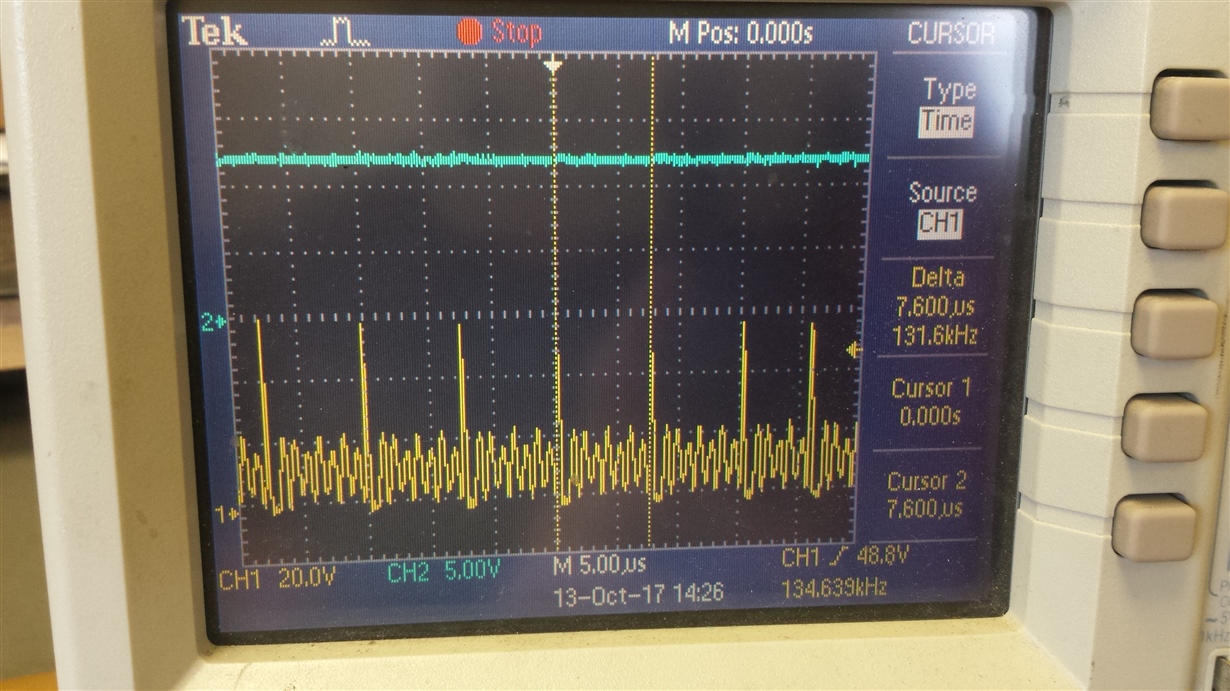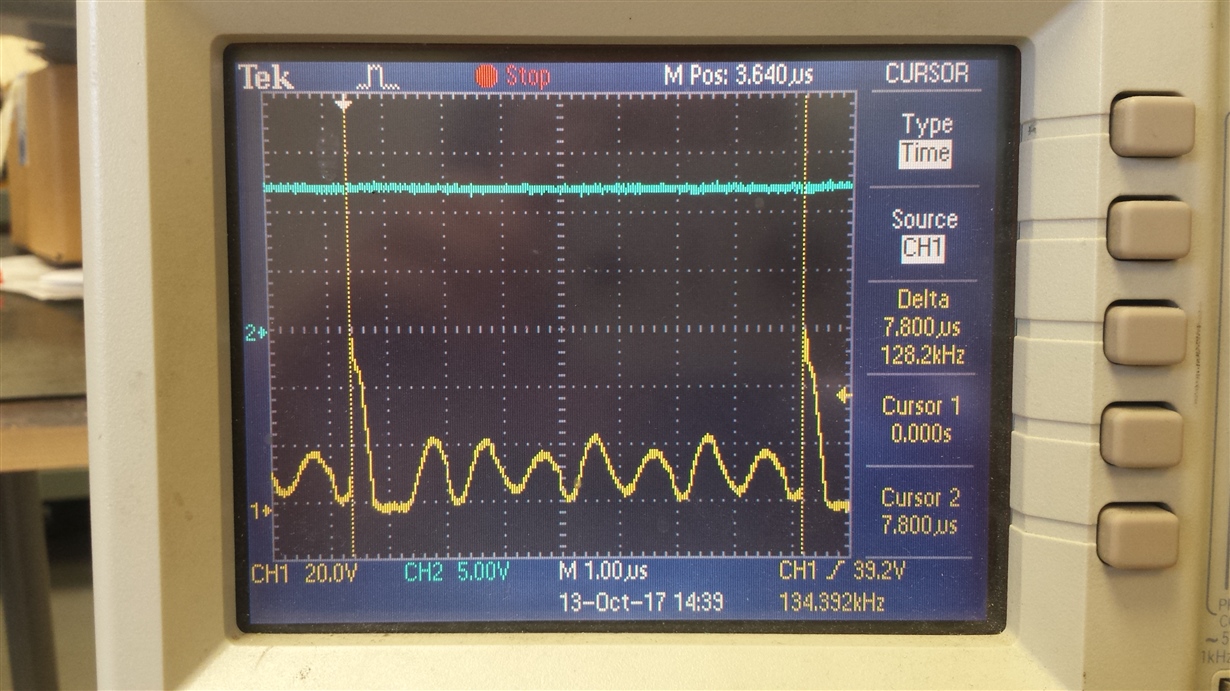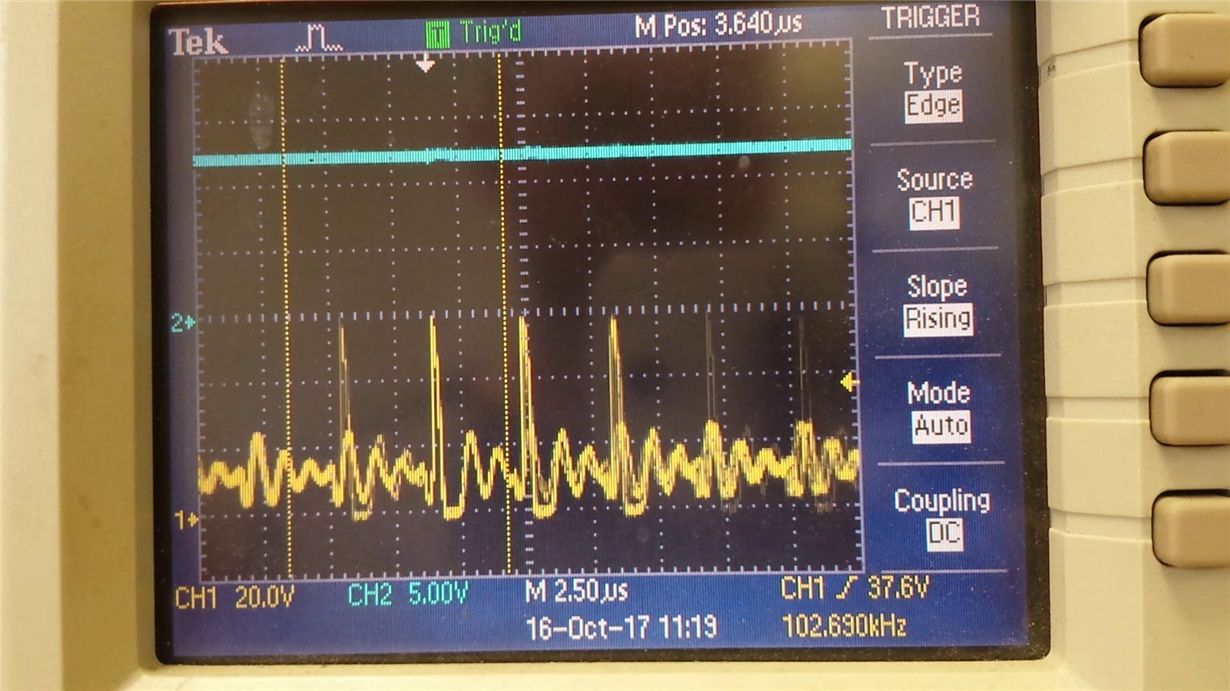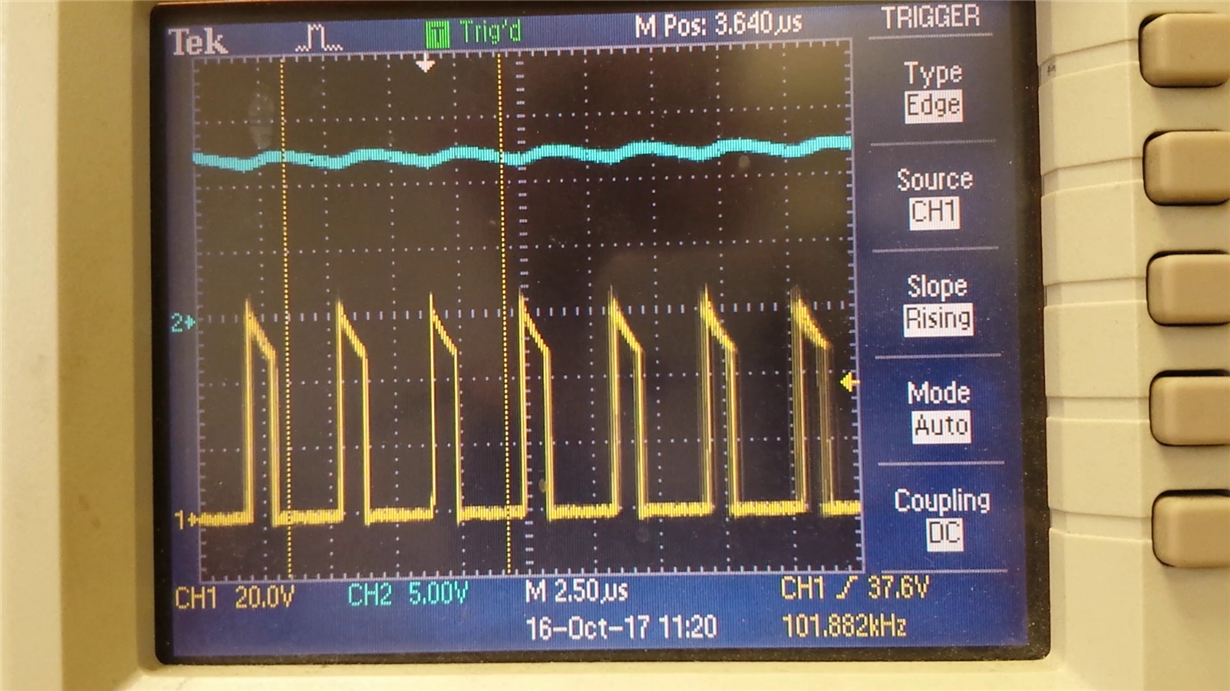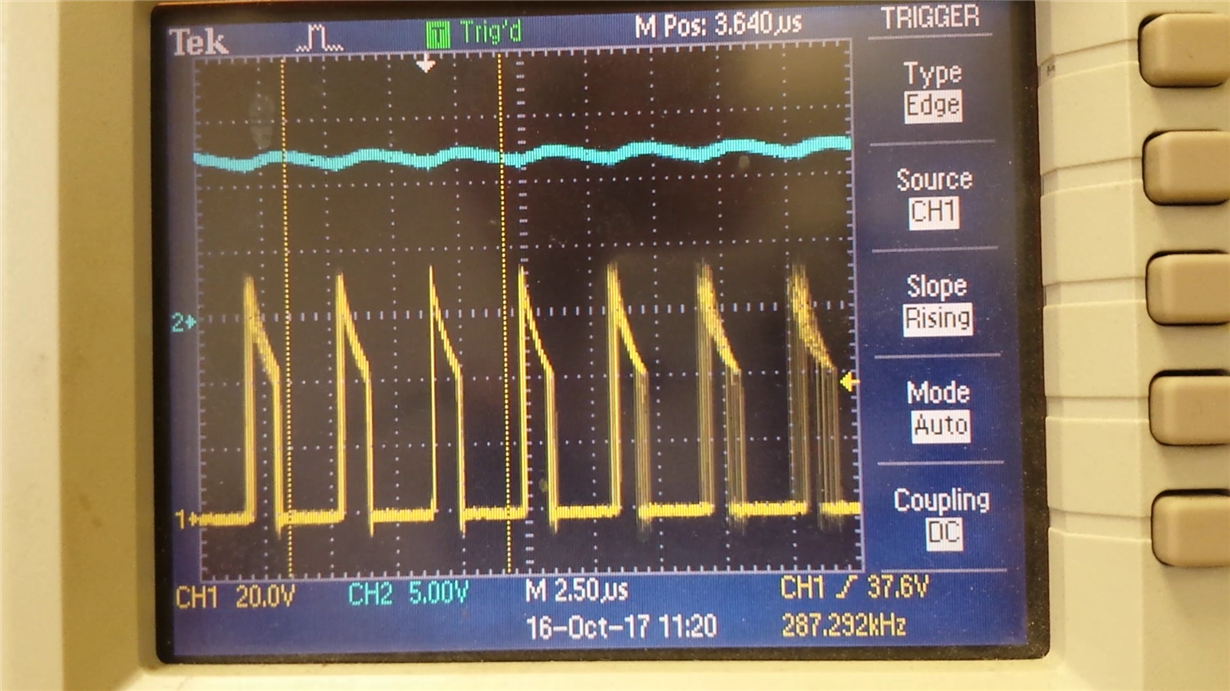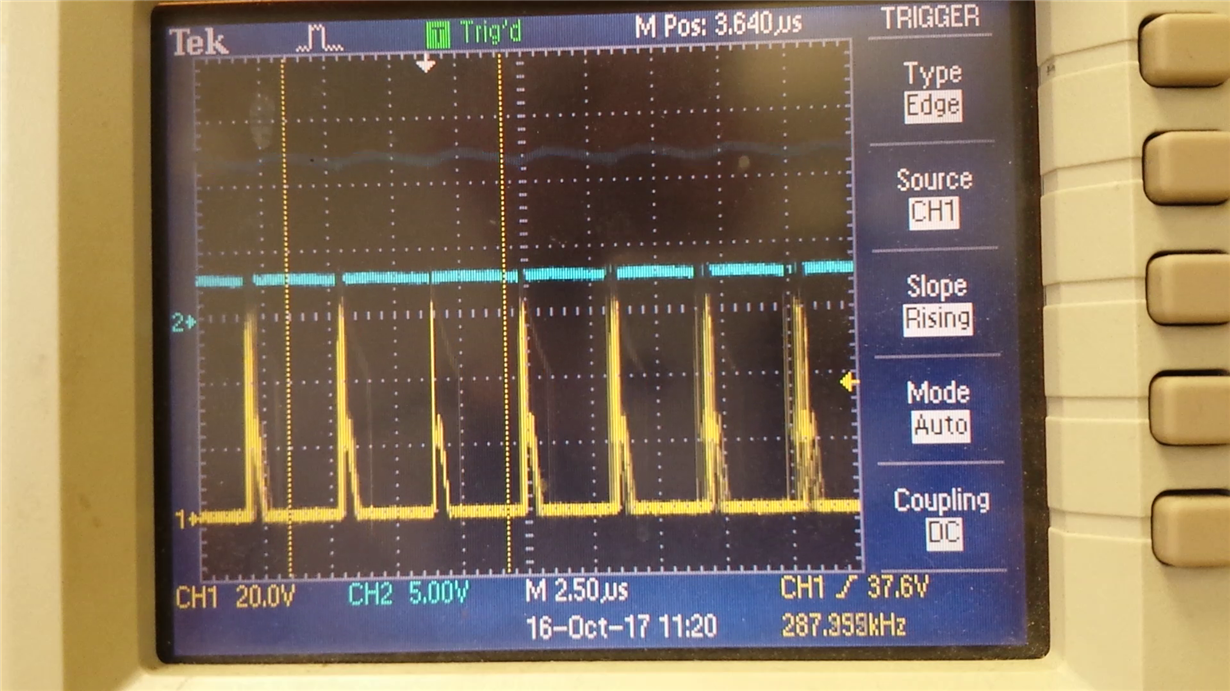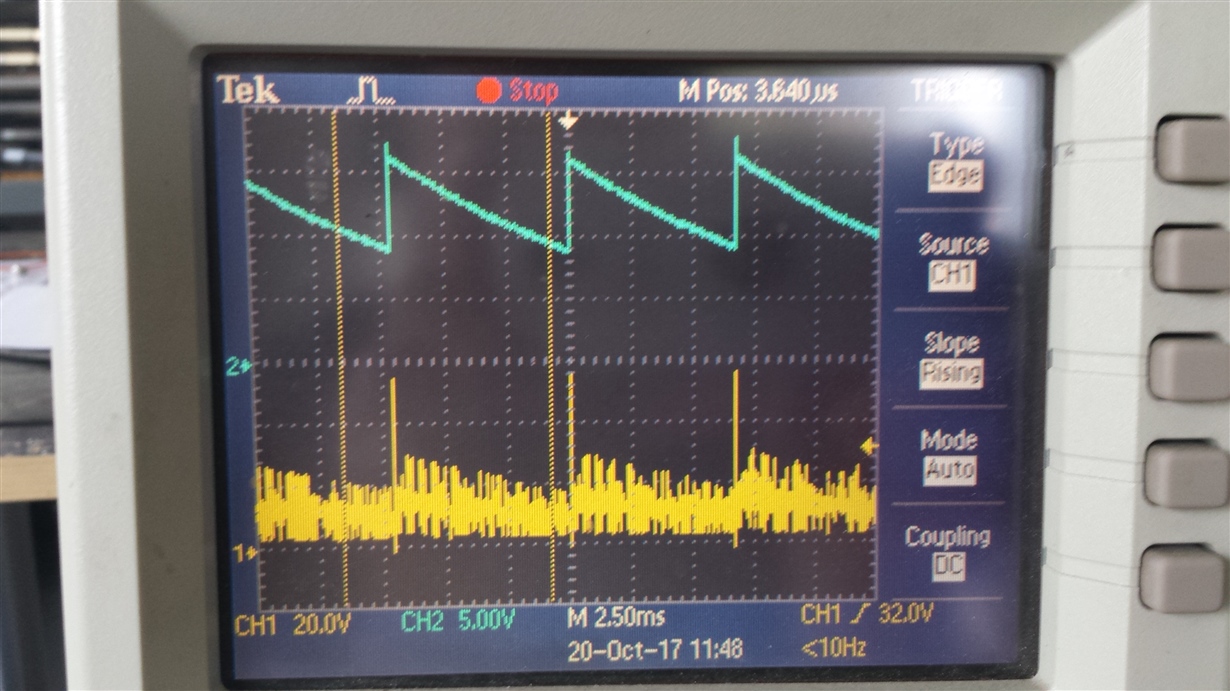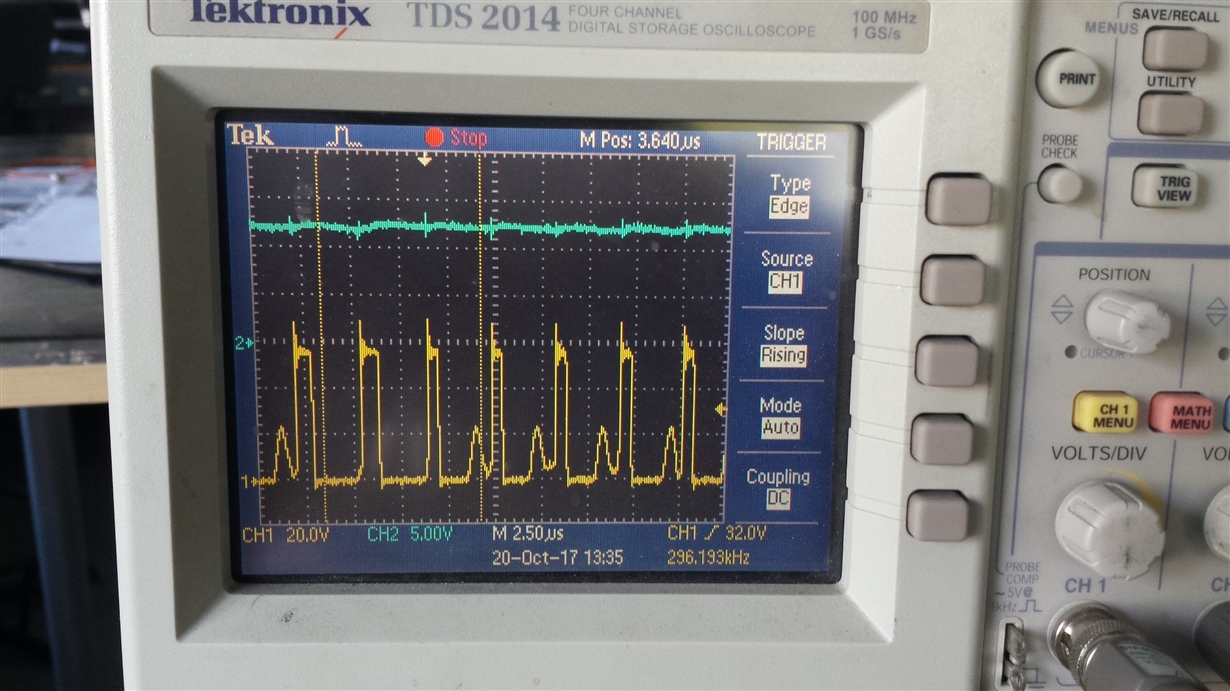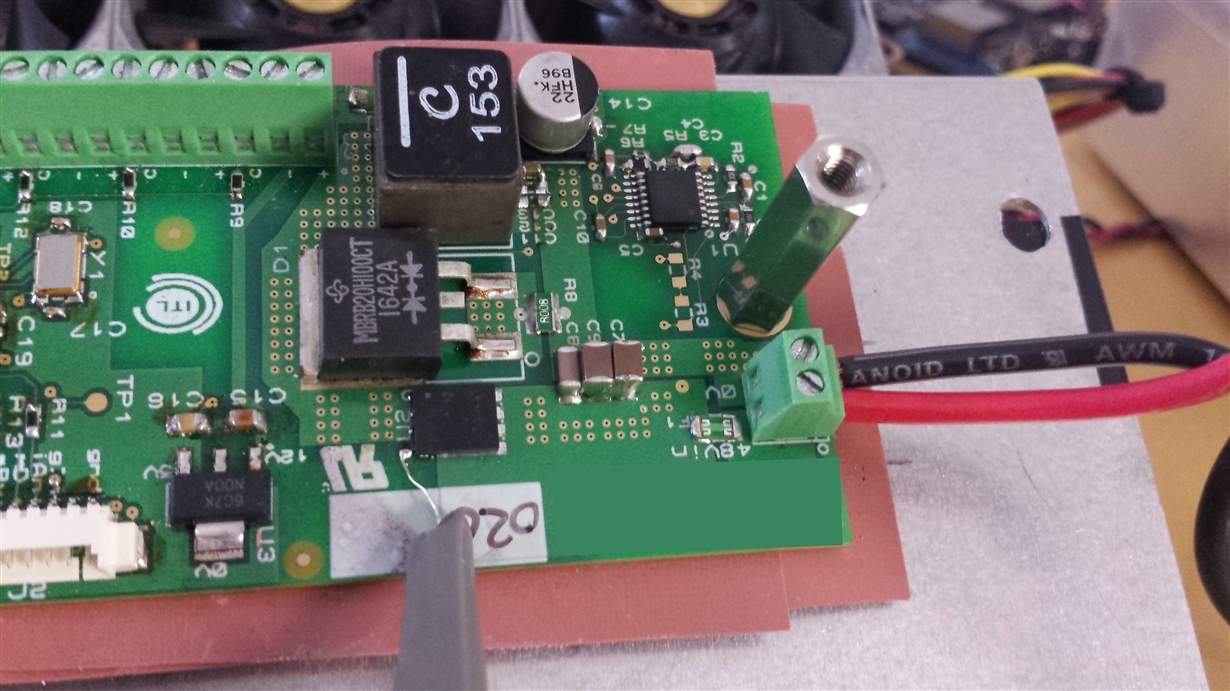Hi, I’m getting failures of the LM5088 part while powering 4 x Sanyo Denki SanAce40 9HV0412P3K001 PWM 12V fans.
I’ve used TI’s Webench to produce a 48VDC to 12VDC 10A buck converter with link shown below.
https://webench.ti.com/webench5/power/webench5.cgi?lang_chosen=en_US&DesignId=28
The failures happen when starting to run the fans at higher speeds, the buck converter supplying around 86 Watts
The 12V drops out leaving the LM5088 to just get hot.
Closer inspection shows a low resistance between the GND and VCC pins.
Replacing the LM5088 fixes the failed board, but will fail again upon performing the same test.
The PCB is mounted through thermally conductive material onto a metal plate for heat sinking.
I’ve taken thermal images of the LM5088 case temperature and it only seems to be around 60 degrees Celsius at this point, I think there is a jump from 40 Degrees to 60 upon failure.
I’ve performed another load test with a purely resistive load of 1.65 Ohms.
The same issue happens again within a few minutes.
I’ve a video of the setup and a failure, it’s 135Mb and can post if there is somewhere to upload it to.
Is there a way I can tell why the LM5088 devices are failing?
Notes:
I’m not fitting RUV1 or RUV2 as I want the LM5088 to be always enabled.
Could this be an indication of an ‘overload’?
If so, would using the LM5088-2 device solve this problem?
Kind regards, Jerome
Webench Bom
Schematic for our board sheet1
Schematic for our board sheet2
Our bom
Top copper
Inner layer 1
Inner layer 2
Bottom layer
Thermal Camera image just before LM5088 failure. Cursor showing LM5088 at 34 degrees C. The inductor is at 47.4 degrees C.
Thermal Camera image just after LM5088 failure


